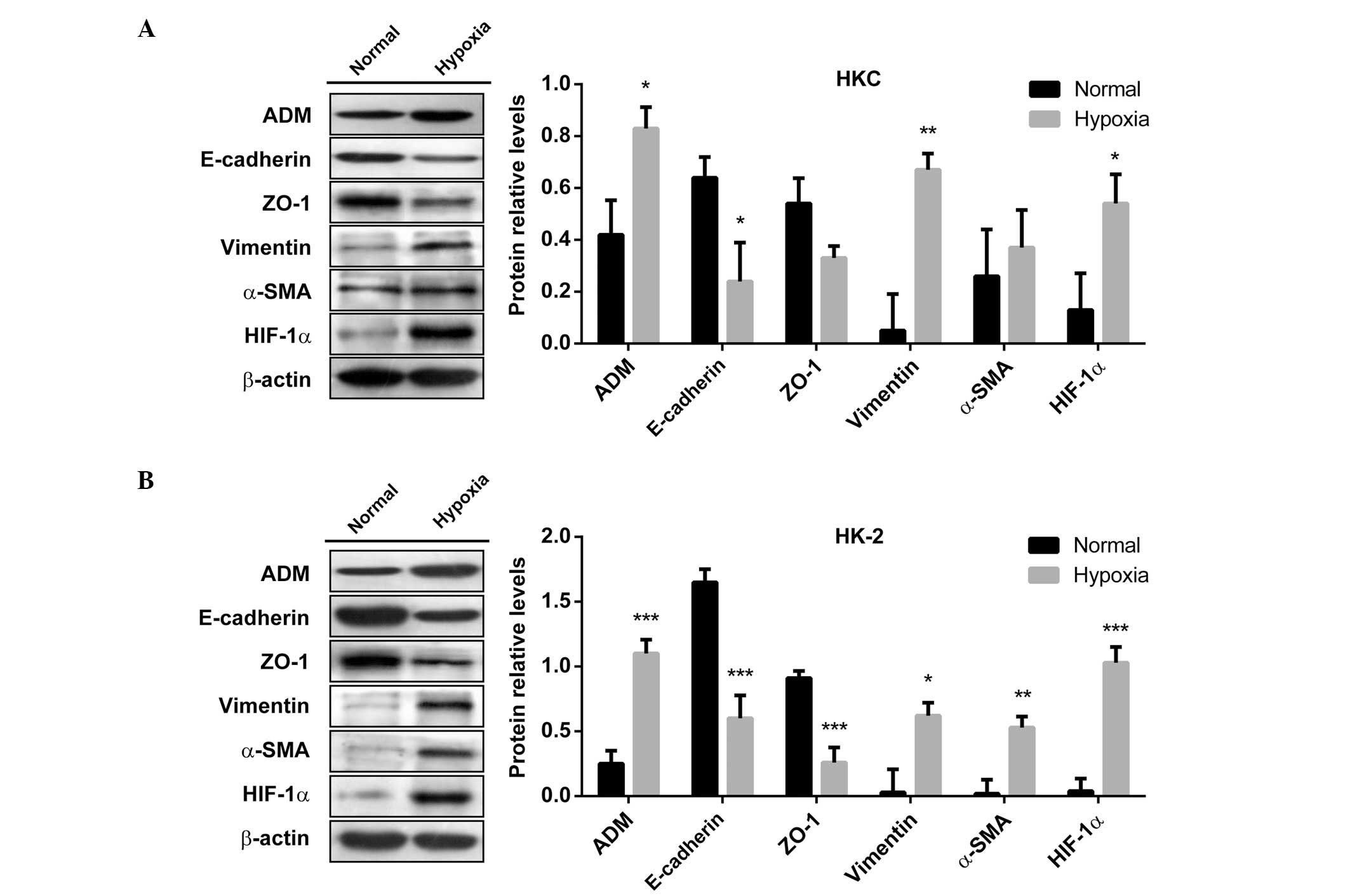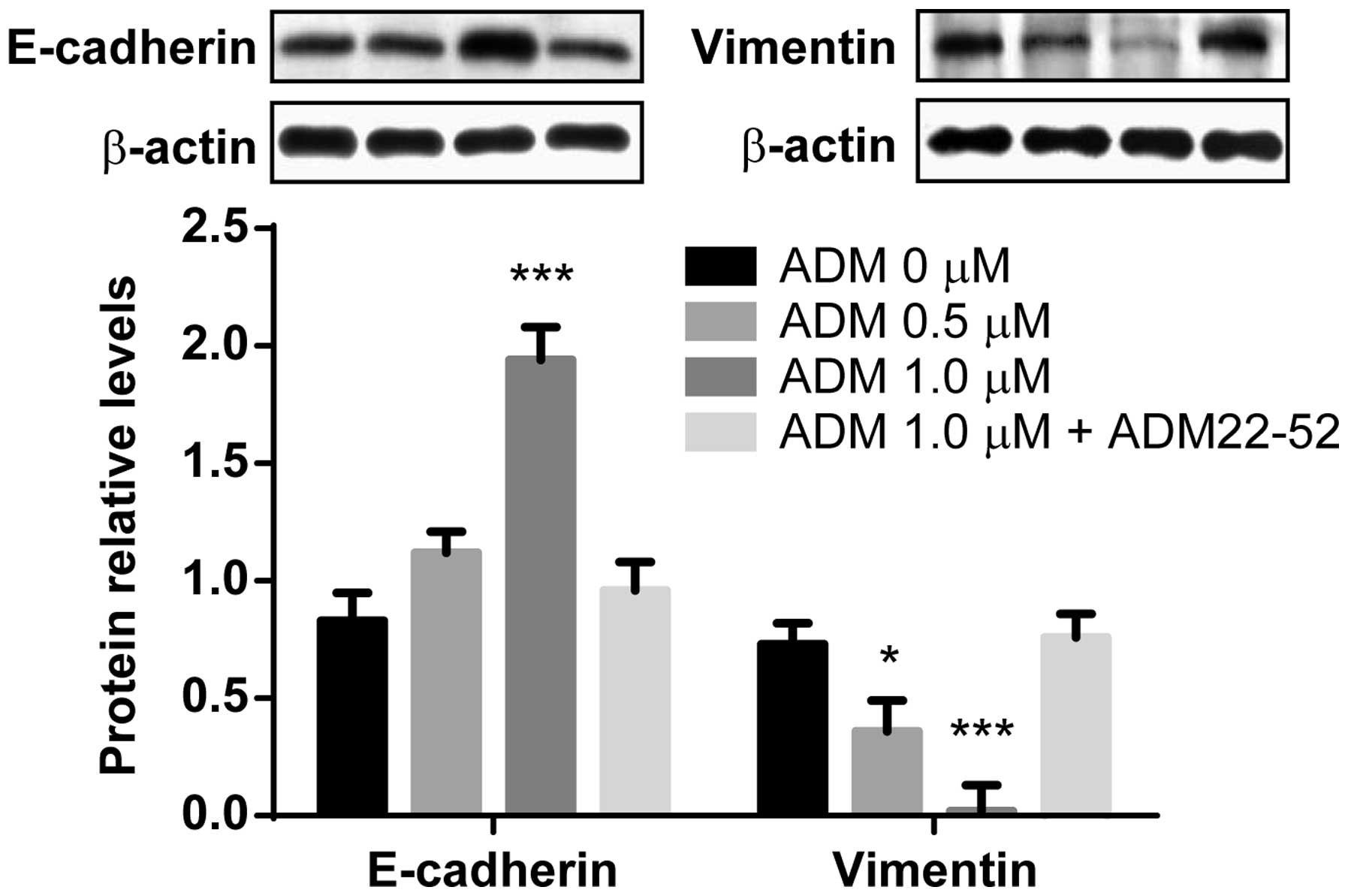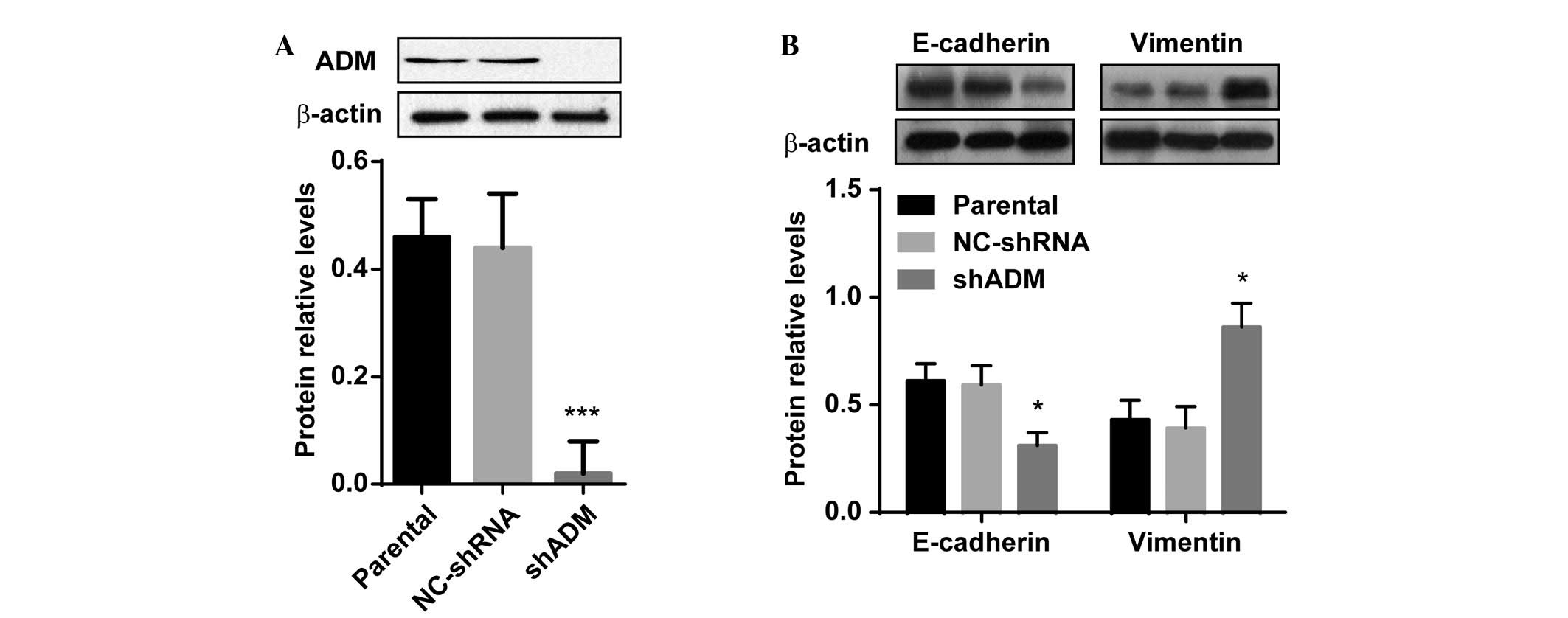|
1
|
Klahr S and Morrissey J: Progression of
chronic renal disease. Am J Kidney Dis. 41:S3–S7. 2003. View Article : Google Scholar : PubMed/NCBI
|
|
2
|
Owen WF Jr: Patterns of care for patients
with chronic kidney disease in the United States: dying for
improvement. J Am Soc Nephrol. 14:S76–S80. 2003. View Article : Google Scholar : PubMed/NCBI
|
|
3
|
Coresh J, Selvin E, Stevens LA, et al:
Prevalence of chronic kidney disease in the United States. JAMA.
298:2038–2047. 2007. View Article : Google Scholar : PubMed/NCBI
|
|
4
|
Centers for Disease Control and
Prevention. Prevalence of chronic kidney disease and associated
risk factors - United States, 1999–2004. MMWR Morb Mortal Wkly Rep.
56:161–165. 2007.
|
|
5
|
Liu Y: Renal fibrosis: new insights into
the pathogenesis and therapeutics. Kidney Int. 69:213–217. 2006.
View Article : Google Scholar : PubMed/NCBI
|
|
6
|
Strutz F and Zeisberg M: Renal fibroblasts
and myofibroblasts in chronic kidney disease. J Am Soc Nephrol.
17:2992–2998. 2006. View Article : Google Scholar : PubMed/NCBI
|
|
7
|
Nath KA: Tubulointerstitial changes as a
major determinant in the progression of renal damage. Am J Kidney
Dis. 20:1–17. 1992. View Article : Google Scholar : PubMed/NCBI
|
|
8
|
Nangaku M: Chronic hypoxia and
tubulointerstitial injury: a final common pathway to end-stage
renal failure. J Am Soc Nephrol. 17:17–25. 2006. View Article : Google Scholar
|
|
9
|
Nangaku M and Eckardt KU: Hypoxia and the
HIF system in kidney disease. J Mol Med (Berl). 85:1325–1330. 2007.
View Article : Google Scholar
|
|
10
|
Zeisberg M and Kalluri R: The role of
epithelial-to-mesenchymal transition in renal fibrosis. J Mol Med
(Berl). 82:175–181. 2004. View Article : Google Scholar
|
|
11
|
Manotham K, Tanaka T, Matsumoto M, et al:
Transdifferentiation of cultured tubular cells induced by hypoxia.
Kidney Int. 65:871–880. 2004. View Article : Google Scholar : PubMed/NCBI
|
|
12
|
Higgins DF, Kimura K, Bernhardt WM, et al:
Hypoxia promotes fibrogenesis in vivo via HIF-1 stimulation of
epithelial-to-mesenchymal transition. J Clin Invest. 117:3810–3820.
2007.PubMed/NCBI
|
|
13
|
Sun S, Ning X, Zhang Y, et al:
Hypoxia-inducible factor-1alpha induces Twist expression in tubular
epithelial cells subjected to hypoxia, leading to
epithelial-to-mesenchymal transition. Kidney Int. 75:1278–1287.
2009. View Article : Google Scholar : PubMed/NCBI
|
|
14
|
Kitamura K, Kangawa K, Kawamoto M, et al:
Adrenomedullin: a novel hypotensive peptide isolated from human
pheochromocytoma. Biochem Biophys Res Commun. 192:553–560. 1993.
View Article : Google Scholar : PubMed/NCBI
|
|
15
|
Hinson JP, Kapas S and Smith DM:
Adrenomedullin, a multifunctional regulatory peptide. Endocr Rev.
21:138–167. 2000.PubMed/NCBI
|
|
16
|
Chen L, Qiu JH, Zhang LL and Luo XD:
Adrenomedullin promotes human endothelial cell proliferation via
HIF-1α. Mol Cell Biochem. 365:263–273. 2012. View Article : Google Scholar : PubMed/NCBI
|
|
17
|
Eto Y, Shimosawa T, Nitta K, Nihei H and
Maruyama N: Interaction between adrenomedullin and angiotensin II
in DNA synthesis and extracellular matrix accumulation in cultured
rat kidney interstitial cells. Clin Exp Nephrol. 6:7–12. 2002.
View Article : Google Scholar
|
|
18
|
Nagae T, Mori K, Mukoyama M, et al:
Adrenomedullin inhibits connective tissue growth factor expression,
extracellular signal-regulated kinase activation and renal
fibrosis. Kidney Int. 74:70–80. 2008. View Article : Google Scholar : PubMed/NCBI
|
|
19
|
Norman JT, Clark IM and Garcia PL: Hypoxia
promotes fibrogenesis in human renal fibroblasts. Kidney Int.
58:2351–2366. 2000. View Article : Google Scholar : PubMed/NCBI
|
|
20
|
Leonard MO, Cottell DC, Godson C, Brady HR
and Taylor CT: The role of HIF-1 alpha in transcriptional
regulation of the proximal tubular epithelial cell response to
hypoxia. J Biol Chem. 278:40296–40304. 2003. View Article : Google Scholar : PubMed/NCBI
|
|
21
|
Rudnicki M, Eder S, Perco P, et al: Gene
expression profiles of human proximal tubular epithelial cells in
proteinuric nephropathies. Kidney Int. 71:325–335. 2007. View Article : Google Scholar
|
|
22
|
Wang S, de Caestecker M, Kopp J, Mitu G,
Lapage J and Hirschberg R: Renal bone morphogenetic protein-7
protects against diabetic nephropathy. J Am Soc Nephrol.
17:2504–2512. 2006. View Article : Google Scholar : PubMed/NCBI
|
|
23
|
Ogita T, Hashimoto E, Yamasaki M, et al:
Hypoxic induction of adrenomedullin in cultured human umbilical
vein endothelial cells. J Hypertens. 19:603–608. 2001. View Article : Google Scholar : PubMed/NCBI
|
|
24
|
Oehler MK, Norbury C, Hague S, Rees MC and
Bicknell R: Adrenomedullin inhibits hypoxic cell death by
upregulation of Bcl-2 in endometrial cancer cells: a possible
promotion mechanism for tumour growth. Oncogene. 20:2937–2945.
2001. View Article : Google Scholar : PubMed/NCBI
|
|
25
|
Nguyen SV and Claycomb WC: Hypoxia
regulates the expression of the adrenomedullin and HIF-1 genes in
cultured HL-1 cardiomyocytes. Biochem Biophys Res Commun.
265:382–386. 1999. View Article : Google Scholar : PubMed/NCBI
|
|
26
|
Rudnicki M, Perco P, Enrich J, et al:
Hypoxia response and VEGF-A expression in human proximal tubular
epithelial cells in stable and progressive renal disease. Lab
Invest. 89:337–346. 2009. View Article : Google Scholar : PubMed/NCBI
|
|
27
|
Sato K, Imai T, Iwashina M, Marumo F and
Hirata Y: Secretion of adrenomedullin by renal tubular cell lines.
Nephron. 78:9–14. 1998. View Article : Google Scholar : PubMed/NCBI
|
|
28
|
Shah KG, Rajan D, Jacob A, et al:
Attenuation of renal ischemia and reperfusion injury by human
adrenomedullin and its binding protein. J Surg Res. 163:110–117.
2010. View Article : Google Scholar : PubMed/NCBI
|
|
29
|
Zavadil J, Bitzer M, Liang D, et al:
Genetic programs of epithelial cell plasticity directed by
transforming growth factor-beta. Proc Natl Acad Sci USA.
98:6686–6691. 2001. View Article : Google Scholar : PubMed/NCBI
|
|
30
|
Jechlinger M, Grunert S, Tamir IH, et al:
Expression profiling of epithelial plasticity in tumor progression.
Oncogene. 22:7155–7169. 2003. View Article : Google Scholar : PubMed/NCBI
|
|
31
|
Bajpai S, Feng Y, Wirtz D and Longmore GD:
β-Catenin serves as a clutch between low and high intercellular
E-cadherin bond strengths. Biophys J. 105:2289–2300. 2013.
View Article : Google Scholar : PubMed/NCBI
|
|
32
|
Horster MF, Braun GS and Huber SM:
Embryonic renal epithelia: induction, nephrogenesis, and cell
differentiation. Physiol Rev. 79:1157–1191. 1999.PubMed/NCBI
|
|
33
|
Zeisberg M, Hanai J, Sugimoto H, et al:
BMP-7 counteracts TGF-beta1-induced epithelial-to-mesenchymal
transition and reverses chronic renal injury. Nat Med. 9:964–968.
2003. View Article : Google Scholar : PubMed/NCBI
|
|
34
|
Okada H, Danoff TM, Kalluri R and Neilson
EG: Early role of Fsp1 in epithelial-mesenchymal transformation. Am
J Physiol. 273:F563–F574. 1997.PubMed/NCBI
|
|
35
|
Yang J and Liu Y: Dissection of key events
in tubular epithelial to myofibroblast transition and its
implications in renal interstitial fibrosis. Am J Pathol.
159:1465–1475. 2001. View Article : Google Scholar : PubMed/NCBI
|
|
36
|
Strutz F, Zeisberg M, Ziyadeh FN, et al:
Role of basic fibroblast growth factor-2 in epithelial-mesenchymal
transformation. Kidney Int. 61:1714–1728. 2002. View Article : Google Scholar : PubMed/NCBI
|
|
37
|
Keller C, Kroening S, Zuehlke J, Kunath F,
Krueger B and Goppelt-Struebe M: Distinct mesenchymal alterations
in N-cadherin and E-cadherin positive primary renal epithelial
cells. PLoS One. 7(8): e435842012. View Article : Google Scholar : PubMed/NCBI
|
|
38
|
Grewal JS, Mukhin YV, Garnovskaya MN,
Raymond JR and Greene EL: Serotonin 5-HT2A receptor induces
TGF-beta1 expression in mesangial cells via ERK: proliferative and
fibrotic signals. Am J Physiol. 276:F922–F930. 1999.PubMed/NCBI
|
|
39
|
Pat B, Yang T, Kong C, Watters D, Johnson
DW and Gobe G: Activation of ERK in renal fibrosis after unilateral
ureteral obstruction: modulation by antioxidants. Kidney In.
67:931–943. 2005. View Article : Google Scholar
|



















